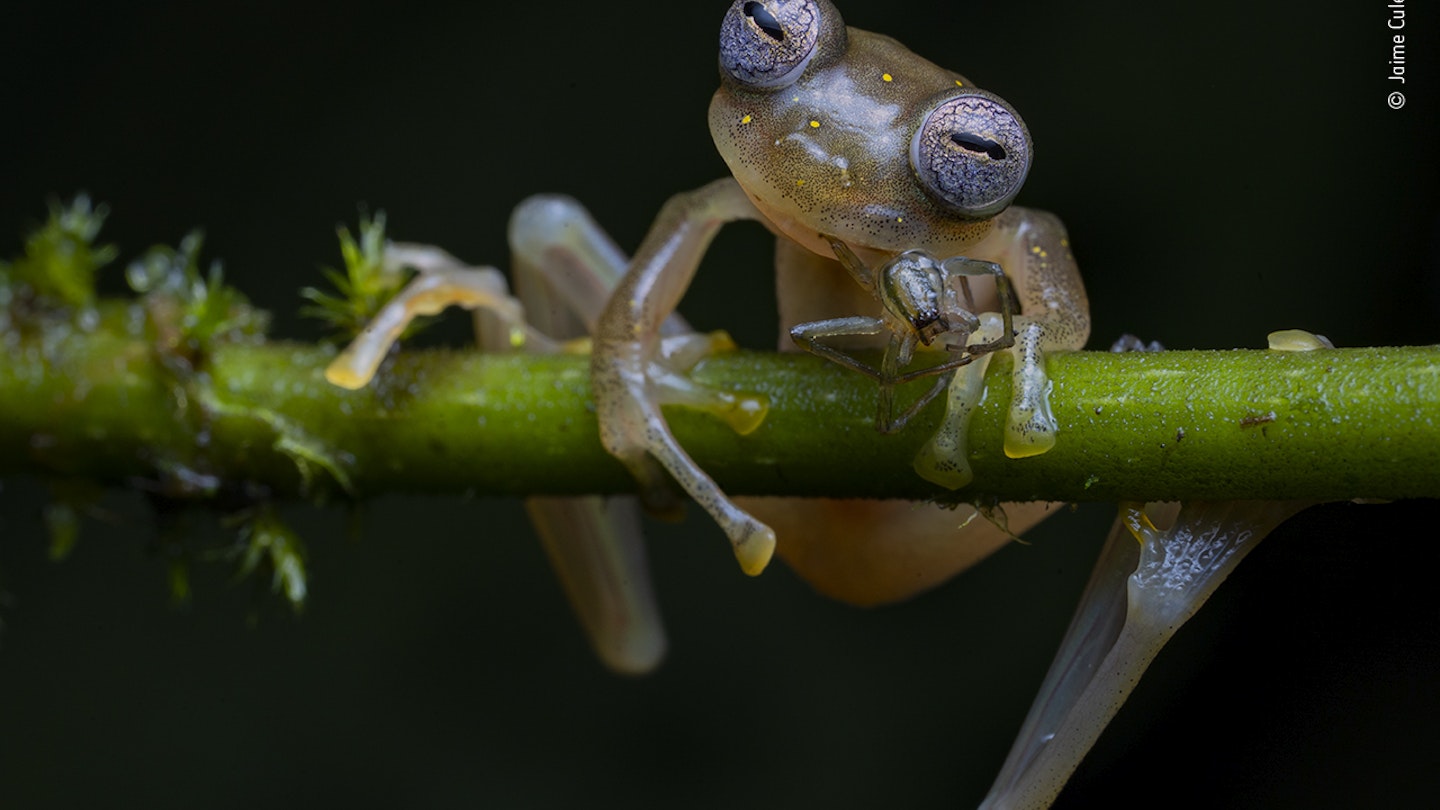The Wildlife Photographer of the Year competition has yielded some amazing images, including stunning portrayals of the battle for survival between animals and insects, as well as the challenges facing our natural world. Furthermore, there are poignant images reflecting humanity’s treatment of some of our planet’s most beautiful creatures.
The Natural History Museum develops and produces this prestigious competition, which attracted a remarkable 49,000 entries from across the globe this year. The winning images will be featured in lightbox displays at the Wildlife Photographer of the Year exhibition at the museum, and they will also travel to various locations in the UK and internationally. Photographers can submit entries for the next competition between 19 October and 10 December 2020, with further details available here.
Winner 2020, Wildlife Photojournalism: Single Image

Kirsten Luce from the US captured this evocative image of a polar bear performing in an ice-rink show at a travelling Russian circus, Circus on Ice. A wire muzzle prevents the polar bear from biting back; she is one of four females reportedly captured in Russia’s Franz Josef Land at two years old, still performing 18 years later. For the photographer, who has spent years reporting on animal exploitation and abuse, this was the most symbolically shocking of all the scenes of exploitation she has confronted—featuring as it does such an Arctic icon of wildness.
Winner 2020, 11-14 years-old

Sam Sloss from Italy/US won the 11-14 years-old category with his captivating image, “A mean mouthful.” He captured the clownfish during a diving holiday in Indonesia, intrigued by its expression. Upon reviewing the photos, he discovered tiny eyes peeking out of the clownfish’s mouth—those belonged to a “tongue-eating louse,” a parasitic isopod that enters through the gills, changes sex, and attaches itself at the base of the tongue, sucking blood. Although the presence of the isopod may weaken its host, the clownfish can still manage to feed. This striking duality of survival fascinated Sam and adds depth to the image.
Winner 2020, Wildlife Photographer of the Year Portfolio Award

The image titled “The last bite” is a part of a winning photo story by Ripan Biswas from India. This scene captures the giant riverine tiger beetle pursuing prey on the ground while weaver ants primarily stay in the trees—making their encounters rare. As the beetle picked off some ants from a colony, one brave ant defended its territory by biting the beetle’s hind leg. In a swift reaction, the beetle used its large mandibles to snip the ant in two, yet remarkably, the ant’s head and upper body remained attached.
Winner 2020, Rising Star Portfolio

“Eleonora’s gift” by Alberto Fantoni from Italy is part of a photo story that won the Rising Star Portfolio. The image depicts a male Eleonora’s falcon delivering prey, a bird snatched from the skies, to his mate watching over their nest. Alberto took this image while observing from a hide on San Pietro Island, capturing the magnificent adults as they perched on cliff tops. He noted that the male falcon seemed reluctant to relinquish his catch without an earnest struggle, emphasizing the dramatic interplay between parental duty and instinct.
Winner 2020, Wildlife Photojournalist Story

“Backroom business” by Paul Hilton from UK/Australia is a poignant part of a winning photo story that highlights the heartbreaking reality of wildlife exploitation, earning him the Wildlife Photojournalist Story award. The image depicts a young pig-tailed macaque chained to a cage in an open-air market in Indonesia. Its mother, along with other mothers, was likely killed, resulting in the babies being sold into a life of solitude as pets, zoo inhabitants, or for biomedical research. Paul, having convinced the trader of his interest, photographed the macaque in a dim backroom. Despite legal sales of macaques, much illegal wildlife trade—including baby orangutans—occurs in these concealed areas.
Winner 2020, 15-17 years-old and Young Grand Title winner

“The fox that got the goose” by Liina Heikkinen from Denmark earned her the 15-17 years-old category award, as well as the Young Grand Title. At just 13, she captured the cub keeping its hungry siblings at bay while ingesting a barnacle goose brought back by its mother. Dragging the goose into a crevice, the cub effectively claimed its prize while blocking access to the others, illustrating the instinctual behavior of young predators in the wild.
Winner 2020, Behaviour: Birds

Jose Luis Ruiz Jiménez from Spain won the Behaviour: Birds category with his “Great crested sunrise” portrait. He spent several hours submerged up to his chest in water at a lagoon near Brozas, in western Spain, to capture this intimate moment of a great crested grebe family. One parent tirelessly chased fish and invertebrates underwater to feed the stripy-headed chick riding on the back of the other parent, allowing it to evade predators until it could swim properly.





